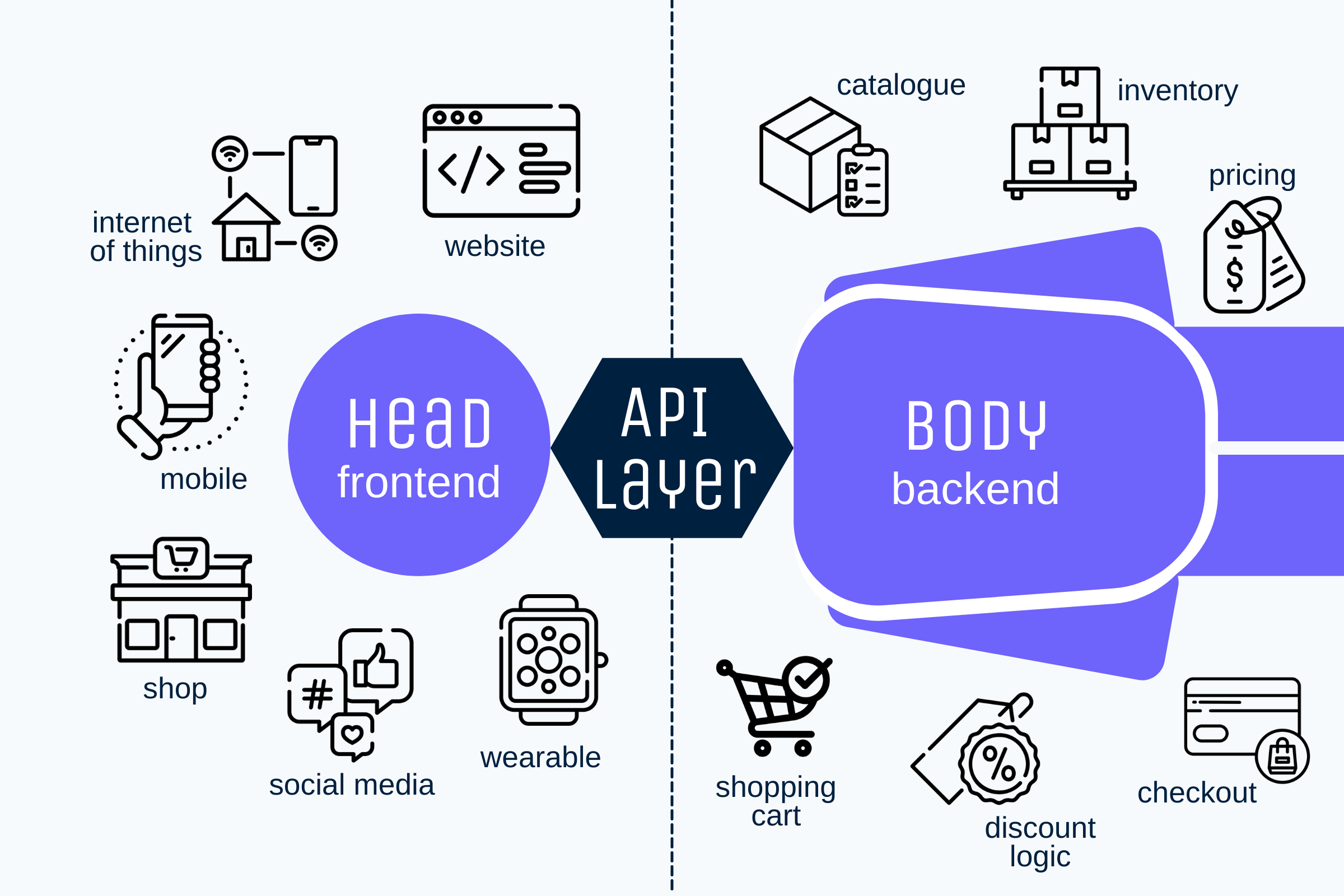
Headless eCommerce is a term used to describe an architecture of an eCommerce platform where the frontend and backend are separate.
This means that the frontend (the part of the site that the customer sees and interacts with) can be built using one technology, while the backend (the part of the site that handles things like order processing and inventory management) can be built using another.
This provides businesses with an unparalleled level of flexibility, allowing them to create unique customer experiences on the frontend.
There are many benefits of using a headless eCommerce platform:
A headless eCommerce is a cutting-edge, powerful platform that works as a decoupled system. Headless architecture separates the presentation layer from the commerce engine. Because it is API-based, the implementation is quick and the system functions well.
A headless commerce platform is a smart option for companies with significant potential for scaling. As the project grows, brands will need to increase web capability to improve the customer experience.
You might also like to read: Examples of headless ecommerce platforms
Traditional eCommerce architecture combines your backend databases and website interface into a single system. If you want to change the interface, you must also make sure that the backend has been modified accordingly.
With headless eCommerce platforms, you may select the frontend technology that best suits you and your future objectives. This enables organizations to provide rich customer experiences without being limited by backend technology.
Alternatively, if you use headless eCommerce, you may modify the way your store is built or how it looks without affecting how it operates on the backend. This flexibility allows you to create a unique shopping experience for your customers.
In conclusion, a headless architecture brings the flexibility required from marketing strategies to technical structures: it allows developers to select the technique they like and believe is best for the layer they are working on. This kind of architecture allows experienced developers a wide degree of freedom, and at the same time, allows for the creation of a personalized and tailor-made user experience based on the specific needs of the customer.
Headless architecture provides an environment suitable for implementing a universal approach, boosting the interactivity and flexibility of purchasing actions. Changes, upgrades, and future interactions will be more seamless than before, and time to market will be significantly reduced.
